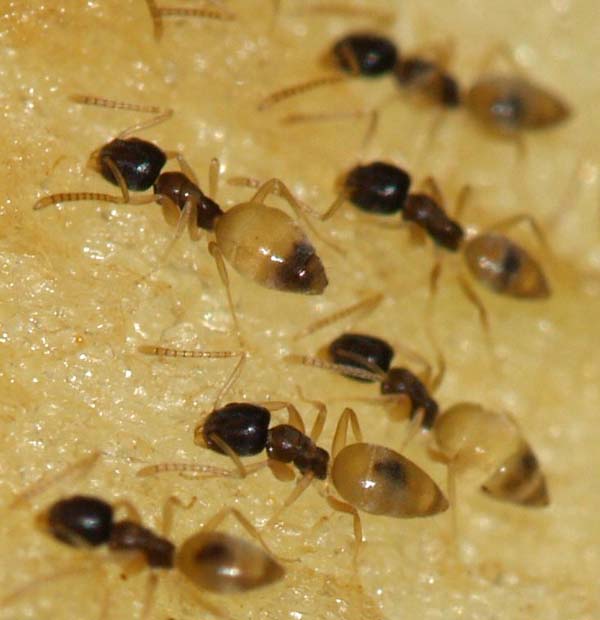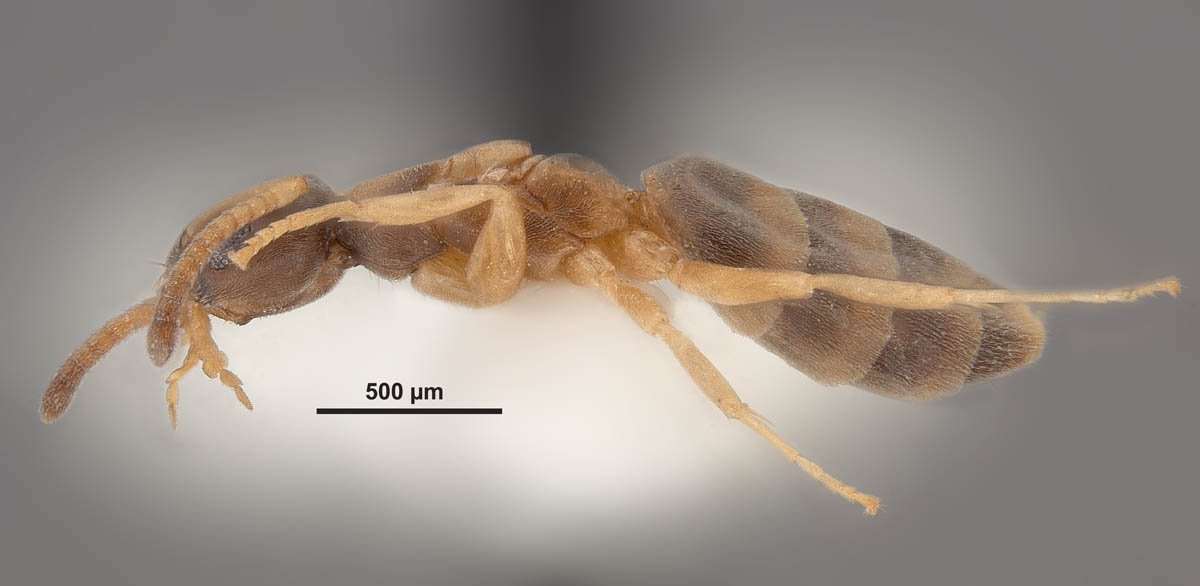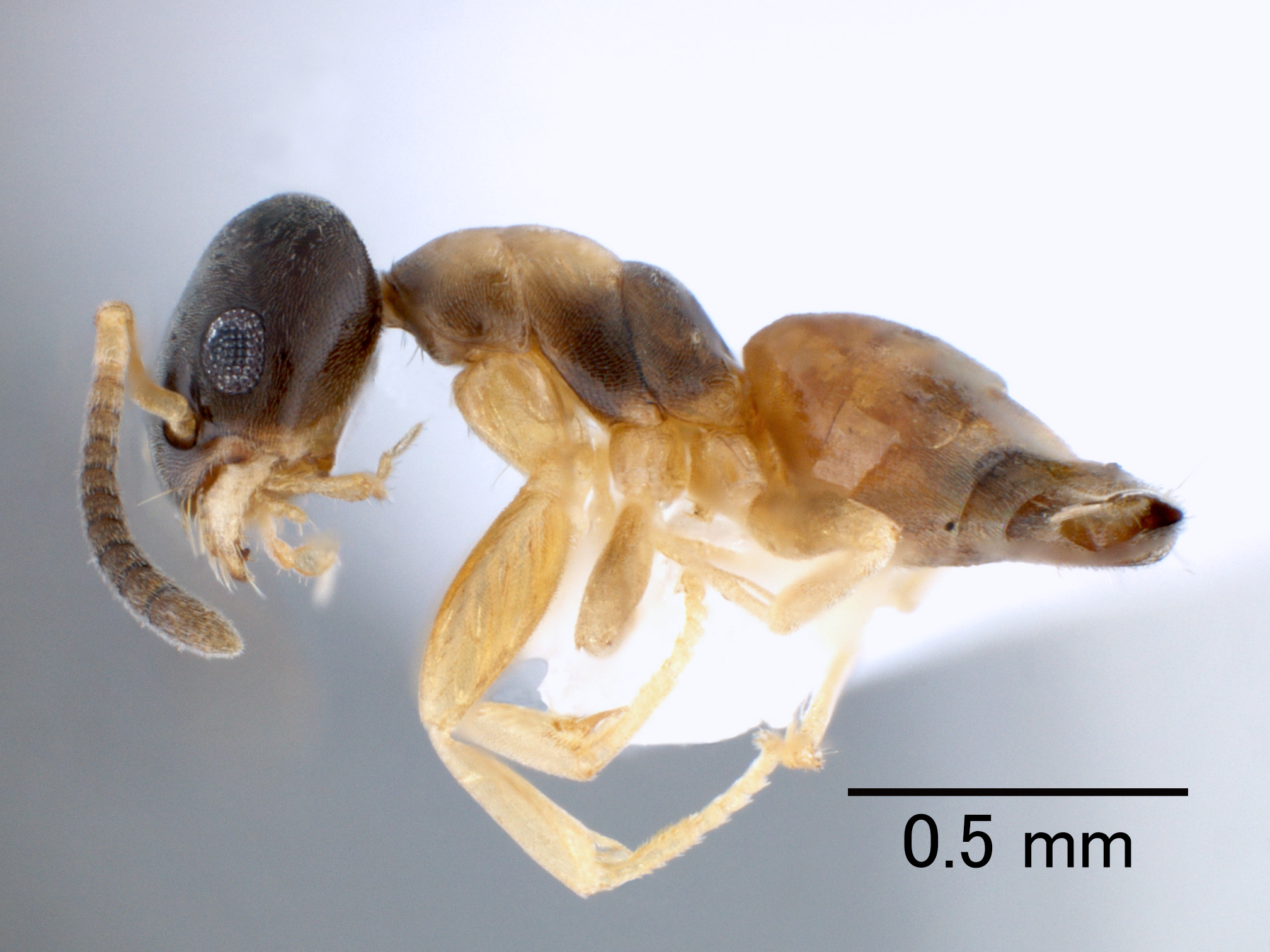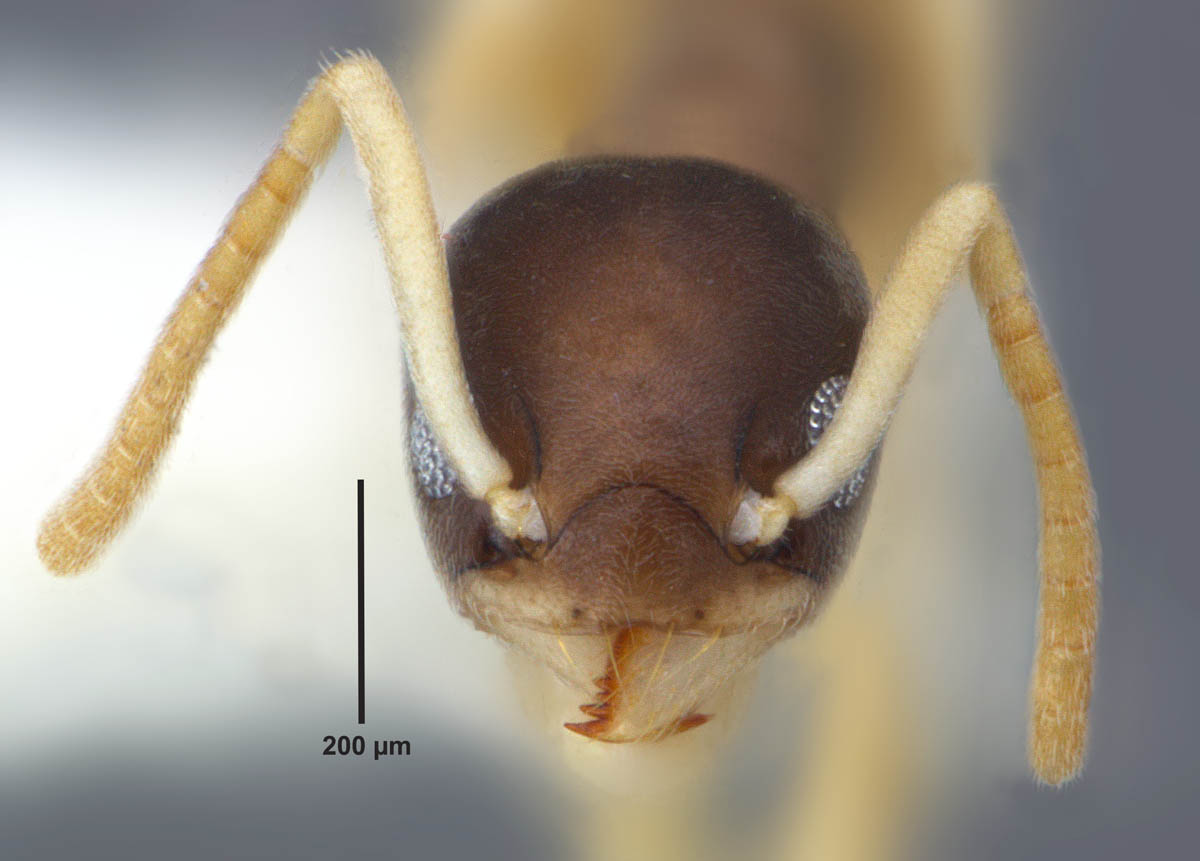Tapinoma melanocephalum (Fabricius, 1793)

Ghost ant Tapinoma melanocephalum Insect
Tapinoma melanocephalum is a household pest, as well as disturbing greenhouse environments and can transport pathogenic microbes in hospitals. view this species on IUCN Red List Species Description T. melanocephalum workers are extremely small, 1.3 to 1.9mm long and monomorphic.
/Tapinoma_melanocephalum_IMG_0713.jpg)
Tapinoma melanocephalum PIAkey factsheet
The ghost ant, Tapinoma melanocephalum (Fabricius), was considered a nuisance ant that was only occasionally important as a house pest within Florida as late as 1988.
/Tapinoma_melanocephalum_EMS1767_CASENT0171078_P.jpg)
Tapinoma melanocephalum PIAkey factsheet
Tapinoma melanocephalum is a species of ant that goes by the common name ghost ant. They are recognised by their dark head and pale or translucent legs and gaster (abdomen). This colouring makes this tiny ant seem even smaller. More Info Computer Vision Model Included
/Tapinoma_melanocephala_IMG_1442.jpg)
Tapinoma melanocephalum PIAkey factsheet
Tapinoma melanocephalum Face view close up of the ghost ant Identification & Characteristics Other Names: Tramp Ant Odor: Rotten Coconut (when crushed) Color: Bi-colored, brown head, pale yellowish trunk with variable brown patches. Opaque to milky white legs Size: 0.05 to 0.08 inches Legs: Six Antennae: Yes, with 12 segments

Ghost Ant, Tapinoma melanocephalum Urban and Structural Entomology
Tapinoma melanocephalum is attracted to sugars and has been observed to tend honeydew producing insects, as well as feeding on dead and live insects insects (Smith 1965). Pest Status Tapinoma melanocephalum's ability to form colonies in any suitable crevice has led to them being a common house infesting ant. It has been reported to form.
/Tapinoma_melanocephalum_EMS1767_CASENT0171078_D.jpg)
Tapinoma melanocephalum PIAkey factsheet
Tapinoma melanocephalum australis Santschi, 1928. Tapinoma melanocephalum is a species of ant that goes by the common name ghost ant . They are recognised by their dark head and pale or translucent legs and gaster (abdomen). This colouring makes this tiny ant seem even smaller.

Tapinoma melanocephalum (Fabricius, 1793)
Tapinoma melanocephalum is listed as one of the most important invasive pest species in China. Information regarding the patterns of invasion and effects of geographic isolation on the population genetics of this species is largely lacking. Location South China. Methods

Tapinoma melanocephalum (Fabricius, 1793)
Ghost ants ( Tapinoma melanocephalum) are tiny, highly mobile, warmth-seeking insects that do not pose any structural or health risks, but can be incredibly difficult to eradicate, especially when over-the-counter sprays have been used to try and control them.

Tapinoma melanocephalum (Fabricius, 1793) アワテコヌカアリ
Tapinoma (from Greek ταπείνωμα low position) is a genus of ants that belongs to the subfamily Dolichoderinae. The genus currently comprises 74 [2] described species distributed worldwide in tropical and temperate regions.
/Tapinoma_melanocephalum_IMG_0688.jpg)
Tapinoma melanocephalum PIAkey factsheet
Tapinoma melanocephalum has one of the widest distributions known for any ant species. It has spread across the Old World and New World in both the northern and southern hemispheres. It is tropical and subtropical; at latitudes greater than 30°, it is largely restricted to living inside buildings.
/Linepithema_humile_CASENT0171090_P.jpg)
Tapinoma melanocephalum PIAkey factsheet
To test this, we examined effects of tending by the native mutualistic ant Tapinoma melanocephalum on growth of P. solenopsis colonies on Chinese hibiscus, Hibiscus rosa-sinensis, in a field setting. Ant workers with access to honeydew of mealybugs lived much longer than those provisioned only with water in the laboratory, and number of ant.
/Iridomyrmex_anceps_group_EMS1765_CASENT0171061_H.jpg)
Tapinoma melanocephalum PIAkey factsheet
The ghost ant, Tapinoma melanocephalum (Fabricius), was considered a nuisance ant that was occasionally important as a house pest within Florida as late as 1988.

Tapinoma melanocephalum (Fabricius, 1793)
Adult Description: The Ghost Ant ( Tapinoma melanocephalum) is extremely small, 1.3 to 1.5 mm long and monomorphic (one-sized). They have 12-segmented antennae with the segments gradually thickening towards the tip. The head and thorax are deep dark brown with opaque or milky white gaster and legs.

ARTHROPODA MEXICANA Tapinoma melanocephalum
Tapinoma melanocephalum has one of the widest distributions known for any ant species. It has spread across the Old World and New World in both the northern and southern hemispheres, though at.

Tapinoma melanocephalum (Fabricius, 1793)
Tapinoma melanocephalum, commonly known as the ghost ant or dark-headed ant, is a very small species with a dark head that contrasts with the paler appendages and gaster. It has a single, flattened waist segment that is often hidden by the gaster , eyes that lie within the outline of the face , and no erect hairs on the mesosoma .
/Tapinoma_melanocephalum_EMS1767_CASENT0171078_H.jpg)
Tapinoma melanocephalum PIAkey factsheet
Tapinoma melanocephalum (ghost ant) Author: P Lester Authors Info & Affiliations Publication: CABI Compendium https://doi.org/10.1079/cabicompendium.54310 Datasheet Types: Pest, Natural enemy, Invasive species Abstract